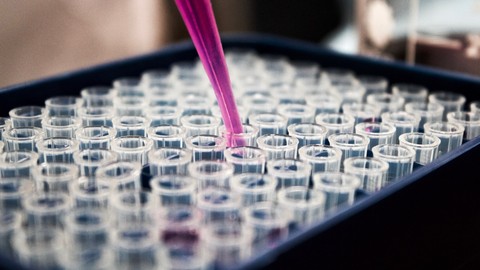
Genetic and Polymerase MCQ Practice Questions (Bio Chem)
-
Genetic Regulation Prokaryotes -
Polymerase Chain Reaction
- Anyone who wants to learn Bio Chemistry
- Advanced Bio Chemistry
- Genetic Regulation Prokaryotes
- Polymerase Chain Reaction
Gene structure is the organisation of specialised sequence elements within a gene. Genes contain the information necessary for living cells to survive and reproduce. In most organisms, genes are made of DNA, where the particular DNA sequence determines the function of the gene. A gene is transcribed (copied) from DNA into RNA, which can either be non-coding (ncRNA) with a direct function, or an intermediate messenger (mRNA) that is then translated into protein. Each of these steps is controlled by specific sequence elements, or regions, within the gene. Every gene, therefore, requires multiple sequence elements to be functional. This includes the sequence that actually encodes the functional protein or ncRNA, as well as multiple regulatory sequence regions. These regions may be as short as a few base pairs, up to many thousands of base pairs long
Much of gene structure is broadly similar between eukaryotes and prokaryotes. These common elements largely result from the shared ancestry of cellular life in organisms over 2 billion years ago. Key differences in gene structure between eukaryotes and prokaryotes reflect their divergent transcription and translation machinery. Understanding gene structure is the foundation of understanding gene annotation, expression, and function
Polymerase chain reaction (PCR) is a method widely used in molecular biology to rapidly make millions to billions of copies of a specific DNA sample, allowing scientists to take a very small sample of DNA and amplify it to a large enough amount to study in detail. PCR was invented in 1983 by the American biochemist Kary Mullis. It is fundamental to much of genetic testing including analysis of ancient samples of DNA and identification of infectious agents. Using PCR, copies of very small amounts of DNA sequences are exponentially amplified in a series or cycles of temperature changes. PCR is now a common and often indispensable technique used in medical laboratory and clinical laboratory research for a broad variety of applications including biomedical research and criminal forensics.
These questions will give you basic idea for Examination Preparation and/or interview on Genetic Regulation Prokaryotes and Polymerase Chain Reaction.
Please Note:
- These questions are only for practice and understanding level of knowledge only. It is not necessary that these questions may or may not appear for examinations and/or interview questions
- In this practice test, because of large amount of questions (around 50 questions) some of questions may have repeated
- I had to put as 70% pass rate because there may also be wrong answers from my side
- Bio Chemistry
- Genetic Regulation Prokaryotes
- Polymerase Chain Reaction



